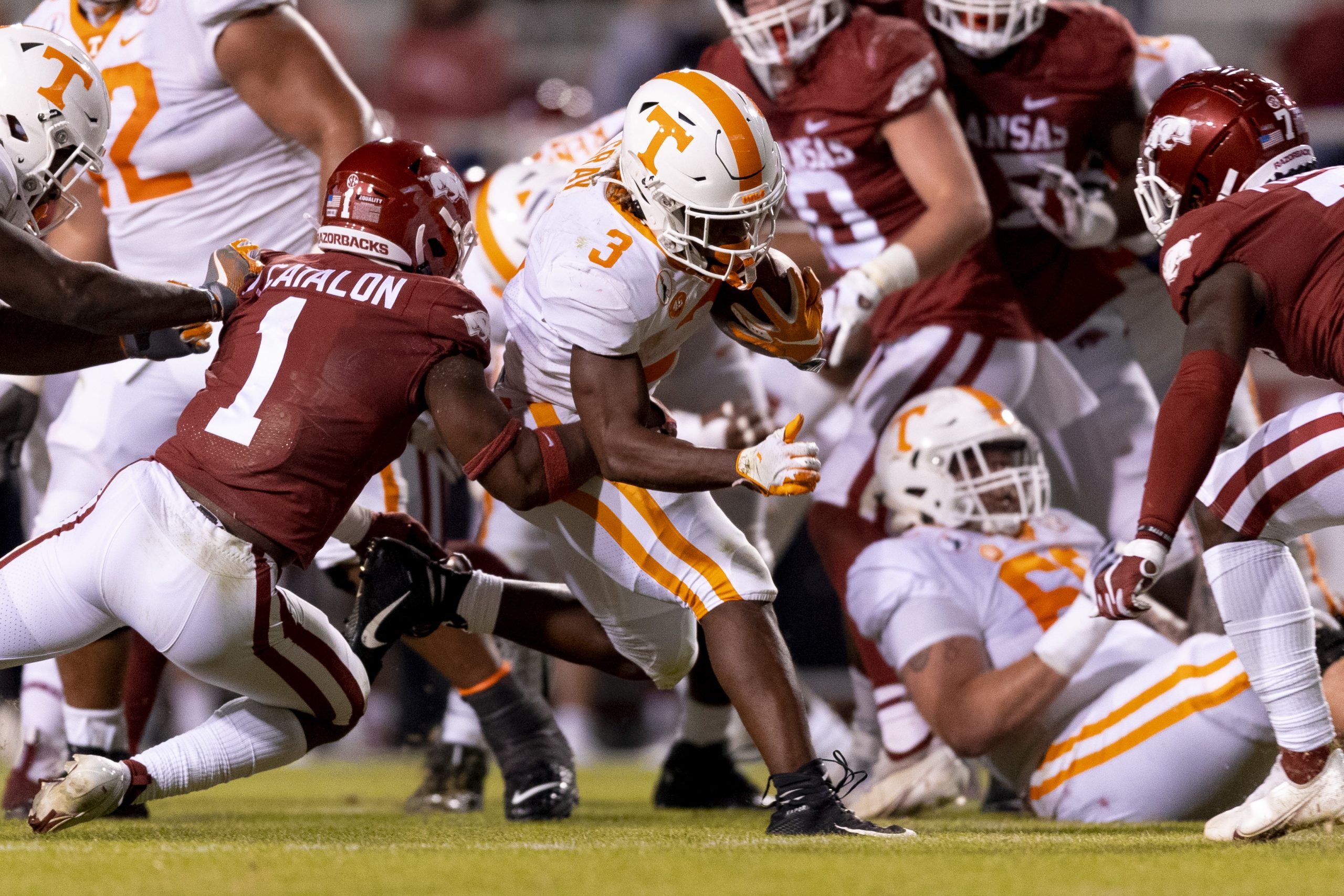It’s hard to find a good comparison to this football season in Tennessee’s history. That’s fitting, given there is no comparison to the way the virus has impacted this year. A good question for all of us, and one we struggled with on the podcast after the Arkansas loss, is how to even discuss the role of the virus in this team’s struggles. Every team in America is dealing with it, so while it may be a unique challenge for some players – most notably Harrison Bailey’s situation in trying to get a freshman quarterback ready – it’s a shared experience in college football. I think if we ended this year with a bunch of random results, it would now feel almost natural to shrug our shoulders and say, “Who knows, let’s see what happens next year.”
But Tennessee’s results, after the first ten quarters, haven’t been random. They’ve been, so far, among some of the worst we’ve ever seen in Knoxville: the Vols and their offense continue to be operating at historic lows, with #23 Auburn and two Top 6 teams still to come. The narrative of the season, so far, has been that when the Vols faced adversity, they fell down a steep hill.
Even last season, as unique as it felt at the time, found some natural comparisons to 1988. To be fair, that’s a comparison we wanted to make, because of what it led the Vols to the following season and beyond. That team was resilient, not just in the second half of the season, but in the second half of games:
- Down 21-17 at half vs South Carolina, won 41-21
- Down 13-3 at half at Kentucky, won 17-13
- Down 22-9 in the fourth quarter vs Indiana, won 23-22
The fall from where we were at halftime of the Georgia game this year to where we are now is dizzying. Tennessee scored 12 touchdowns in the first 10 quarters this season. They’ve scored four touchdowns in the last 14 quarters, one of those down 42-10 to Alabama. It feels like, “We could beat Georgia,” has become, “Can we beat anybody?”
Here are Tennessee’s offensive and defensive numbers from the first and second half this season (stats via SportSource Analytics):
| Rushing Off. | 1H | 2H |
| Attempts | 127 | 113 |
| Yards | 517 | 346 |
| YPC | 4.07 | 3.06 |
| Rushing Def. | 1H | 2H |
| Attempts | 124 | 128 |
| Yards | 438 | 525 |
| YPC | 3.53 | 4.1 |
| Passing Off. | 1H | 2H |
| Completions | 52 | 45 |
| Attempts | 83 | 80 |
| Completion % | 62.7 | 56.3 |
| Yards | 586 | 462 |
| YPA | 7.06 | 5.78 |
| Passing Def. | 1H | 2H |
| Completions | 57 | 57 |
| Attempts | 86 | 82 |
| Completion % | 66.3 | 69.5 |
| Yards | 680 | 805 |
| YPA | 7.9 | 9.82 |
Getting just three yards per carry in the second half while allowing nearly ten yards per pass attempt in the second half is still jarring to look at. The Vols have not allowed a touchdown pass in the first half…and have allowed seven in the second half.
Why does this team struggle to respond to adversity, especially when last year’s team was so good at it? Does the virus play a role here in any human being’s ability to respond, especially an 18-22 year old who did not sign up for any of this in their SEC football experience? If so, how much?
When the conversation shifts so far from random to bad football, it’s simply hard to find the right words to call it much of anything else. As we learned last season, there is certainly still time. The Vols still have meaningful opportunities left this season if they can play meaningful football themselves. Perhaps Harrison Bailey will provide some hope, or a healthy Jarrett Guarantano will find the same magic he delivered at Auburn two years ago.
We would settle for weirdness, because we would at least understand it. In an uncertain year, will these last four games contain any surprises? And can Tennessee find a way to make any of them go our way?
